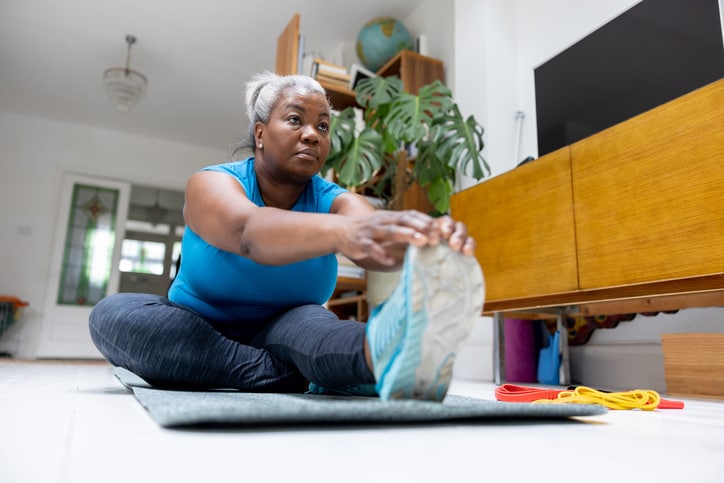When it comes to senior living and housing communities, there are a number of options, ranging from 55 and older and continuing care retirement communities to assisted living, nursing homes and beyond. While an aging adult’s needs and support levels are big deciding factors, one option that provides both independence and amenities that cater to older adults is senior living apartments.
More hands-off than assisted living and nursing homes, senior apartments allow residents to “benefit from retaining their independence while being part of a community,” explains Robert Lowry, vice president of Sunny Hills in Sebring and Homestead, Florida. “They have activities at hand at these types of facilities, which promote a healthy and sociable lifestyle.”
Here, Lowry and other experts explain what to expect from senior living apartments.
What are senior living apartments?
Senior apartments are residential housing units specifically designed for older adults, typically aged 55 and older, explains Leslie Waddell, vice president of franchise experience at BrightStar Care.
“These apartments are often designed for independent living, meaning residents can maintain an active and self-sufficient lifestyle,” Waddell continues. “They generally are not equipped with medical facilities or staff for hands-on care.” (In other words: They’re very different from assisted living and nursing homes — more on that shortly!)
Senior apartment living will look a little different at each complex, but typically they offer features and amenities that cater to the lifestyle of older adults. According to Sandi Petersen, who holds a doctor of nursing practice degree and is currently the senior vice president of health and wellness at Pegasus Senior Living, these may include “opportunities to socialize with others of similar ages and interests, transportation services, planned activities and congregate meal settings.” Additionally, she notes, most senior apartments are equipped with private, “full kitchens.”
They’re also designed with accessibility in mind, which Waddell notes, “may include features such as ramps, handrails and other modifications to accommodate mobility challenges.”
Some senior apartments make a great option for couples, too. “While the rules and regulations differ between senior apartment facilities, in general, up to two seniors are permitted to live in a senior apartment together so long as they meet the age criteria for the facility,” Waddell adds. “Senior apartment facilities typically have an age requirement of 55+, 60+, or 65+. In general, as long as both seniors meet the age requirement, they are permitted to reside together in a senior apartment.”
What amenities come with senior apartment living?
Senior apartments vary in size and in the amenities offered, but on the whole, they’re “community-based,” notes Lowry, so their facilities are built around just that.
“Senior apartments typically have communal spaces for organized group activities like tai-chi, game nights and gardening,” Lowry explains. “Their purpose is to bring seniors together and promote interactions at a time where older adults can feel isolated or lose their sense of self.”
Other amenities that may be offered with senior apartment living, according to Waddell, Lowry and Petersen, include:
- Wheelchair-accessible units.
- Grab bars in bathrooms.
- Easy-to-reach light switches and outlets.
- Lever-style door handles.
- Secure entrance and exit.
- 24-hour security or staff presence.
- Access to emergency call systems to summon help.
- Recreation centers for planned social events and activities.
- Transportation options.
- Walking paths or trails.
- Swimming pools.
- Exercise centers.
- Tennis and pickleball courts.
- Housekeeping.
- Meal service options.
- Laundry rooms.
- Full kitchens.
- Congregate dining, restaurant-style.
“With senior apartment living, residents still have independence,” Lowry says, “but services are on offer.”
Does senior apartment living provide transportation?
Many senior apartments provide transportation services for their residents, notes Waddell, though the availability and extent of the service can vary. (It’s also worth noting that, in many senior apartments, residents can have their own car.)
“In many cases, these communities offer scheduled transportation for residents to go shopping, attend medical appointments and participate in community outings,” explains Waddell. “The transportation provided is often designed to be accessible for individuals with limited mobility. This may include wheelchair-accessible vehicles and assistance for residents with special needs.”
Senior apartments vs. assisted living and nursing homes?
Simply put, senior apartments are designed for independent living while assisted living and nursing homes, also called skilled nursing facilities, are set up for individuals who need higher levels of assistance and care for daily living.
“Residents in senior apartments are generally able to live on their own and manage their daily activities without assistance,” explains Waddell. “Residents in assisted living communities maintain a level of independence, but they receive support as needed, based on individual requirements. Nursing homes have on-site medical staff, including registered nurses, who can administer medications, provide medical care and oversee rehabilitation services.”
The other big difference between nursing homes and senior apartments or assisted living facilities is that the former adheres to both state and federal regulations, and in some cases, receives reimbursement from Medicare, Medicaid or private insurance plans. Both senior apartments and assisted living, in most cases, are private pay.
It’s also important to note that when folks like the idea of senior apartment living, but aren’t completely independent, they can still live in one of these facilities and enlist home health care (privately) for more support.
This, Waddell notes, “provides a balance of independence and support in a communal setting.”
What are the benefits of senior apartments?
The biggest advantage of senior apartments, according to Petersen, is that they provide both services and socialization to seniors.
“Safety, security, access to food and services, personal care, transportation and activities/opportunities to socialize are key amenities offered that appeal to many seniors as they find themselves in need of a little more support,” she says. “These settings provide only the services needed while letting older adults remain in control of their lives as much as possible, preserving independence and dignity for as long as possible.”
Put another way: “Senior apartments maximize their residents’ free time, taking care of the mundane and giving more time for fun,” notes Lowry.
What to considered when choosing a senior apartment?
First and foremost, notes Petersen, it’s important to consider your or your loved one’s personality, likes and dislikes when choosing a community. “Additionally, be honest about what services are truly needed,” she says. “While some may want to live in an independent setting, the reality may be more support and care is needed. Through carefully evaluating both desires and needs, the best choice can be made.”
If you’ve decided senior apartment living is the way to go, here’s what else to consider:
Location. “Location is an important factor to consider,” says Lowry. “Not only does it determine how close someone is to their family or friends, it also determines the climate.” Location also, Waddell notes, determines how close someone is from “essential services that will impact their life, such as access to grocery stores and healthcare and medical facilities.”
Amenities/facilities. If you or your loved one loves swimming and pickleball, choose a place with a pool and pickleball court. “Having the right amenities and facilities available will ultimately boost happiness,” says Lowry.
Cost. Determine your budget and work to that price point. While higher-end places with more amenities will cost more, keep in mind, Lowry says, you still want there to be enough money left to “keep your sense of self and ensure a stress-free lifestyle.”
Future considerations. Think beyond the now. “If a higher level of care may be needed in the near- to mid-future, consider the costs of those services in addition to the cost of the community,” notes Lowry.
The bottom line
Senior apartments are designed for independent living and community. The choice between this option and assisted living or a nursing home “depends on a person’s health status, preferences and the level of care required,” says Waddell.
Lowry adds: “For homeowners who no longer want the hassle of home maintenance, senior living offers a maintenance-free life. No lawns to mow or walls to paint — it’s all taken care of so residents can kick back and enjoy life.”




